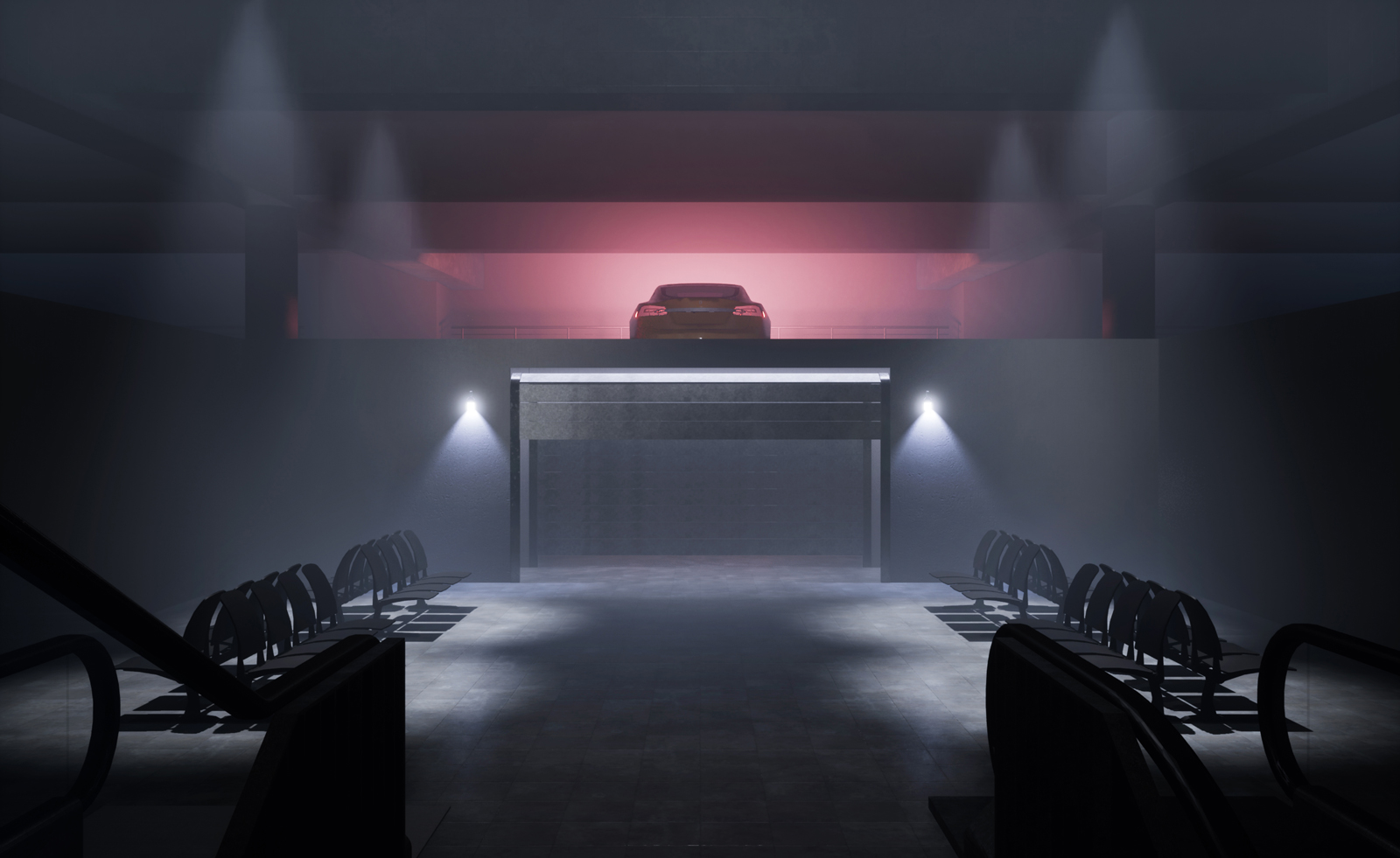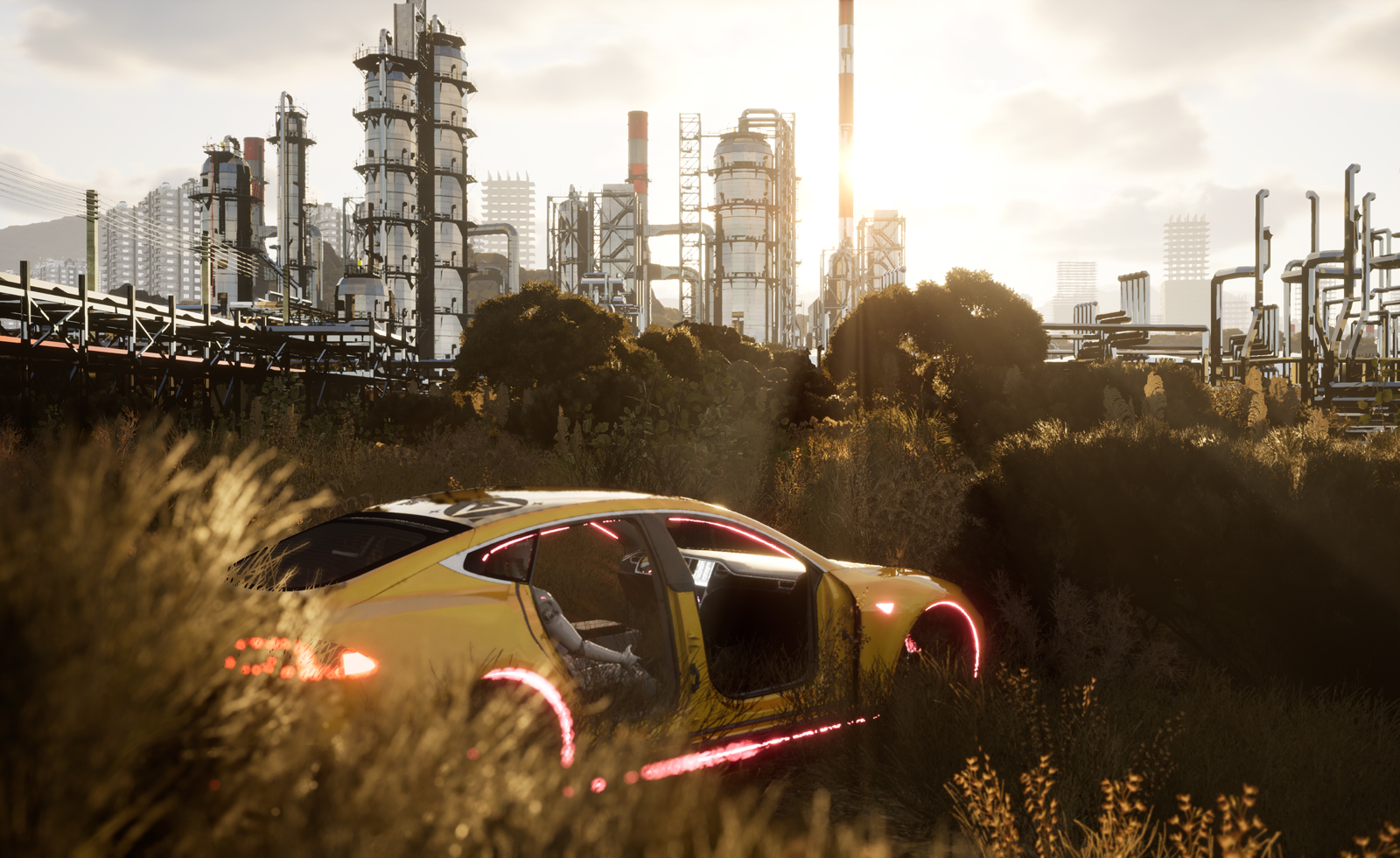
In a world of increased automation, can humans learn to have compassion for machines? Lawrence Lek’s ambitious installation NOX might have visitors weeping over the fate of a depressed car. The surprisingly moving show, created with LAS Art Foundation, is situated within Berlin’s abandoned Kranzler Eck shopping centre, reimagined into a rehabilitation facility for automated cars. The show’s design draws on contemporary aesthetics of tech and wellness, referencing the experiential, immersive nature of everything from car showrooms to cultural institutions and the Apple store.
On the ground floor, numerous vehicles appear to have crashed into the walls and central escalators, as their headlights illuminate the darkened space. Visitors’ headsets are activated at different points across three floors, with video installation and narrated sessions between a therapist and a self-driving car that has come to the facility for a five-day rehabilitation programme. The car’s monologues explore the nature of memory, intergenerational trauma and consciousness, with his soft voice calling to mind noirish sci-fi.
Lawrence Lek, NOX,
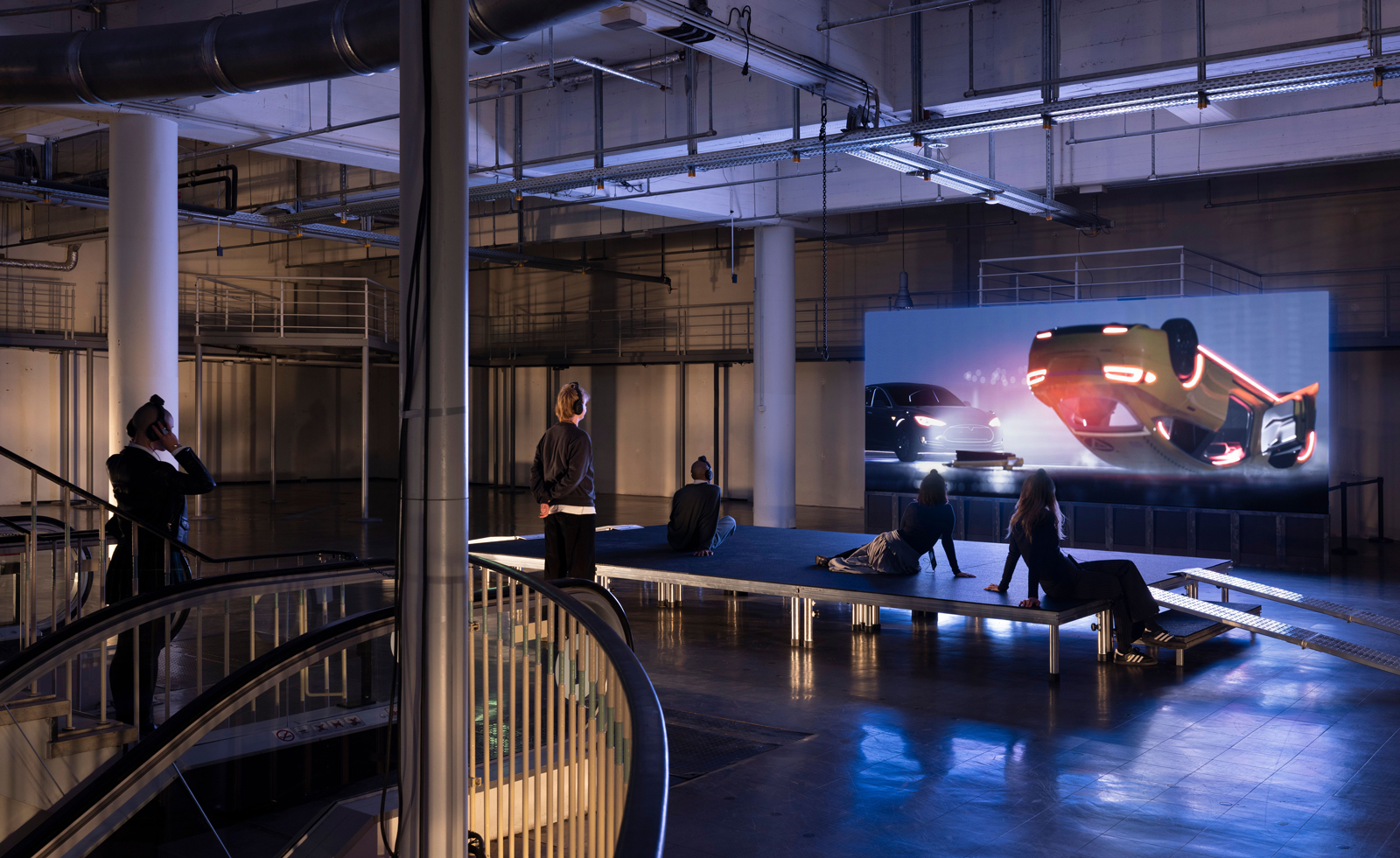
Lek – winner of the 4th VH Award, in 2021, which supports Asian artists – has imbued the work with a sensitivity not often associated with machines, and while he doesn’t wish to project a particular mood onto the audience, the depth of feeling is crucial. ‘For me, that connection is the most important thing,’ he says. ‘There is a definite empathetic quality I want to communicate.’
In order to get into the mind of his central character, Lek thought in human terms. The car has misbehaved and is being put back in line. He saw parallels with the treatment of troubled children at school. ‘Very often the bad kids are the most promising, but they have issues. Should you send them away because you don’t want them to influence the other kids? I thought it could be the same for these cars. Would you reset the car? Would you wipe its memory?’
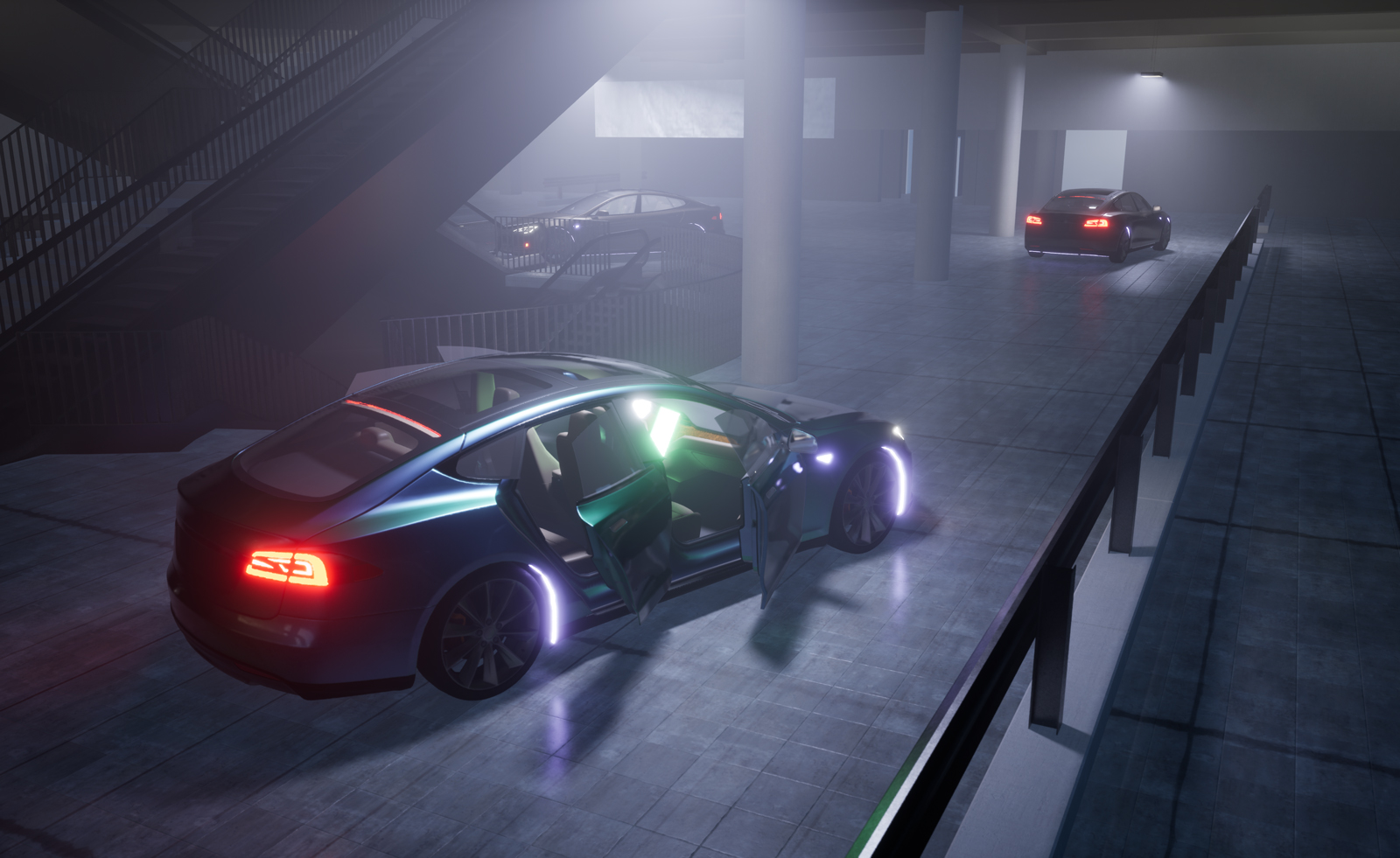
NOX evokes the cold experience of humans in a corporate, post-industrial world. The car is being treated with care, but this is in order to get it back into working shape and carry out its tasks with minimal fuss. ‘There are corporate practices for making people feel better and corporate practices for making machines work. In this super-intelligent, self-driving car scenario, you get both. In our world,’ considers Lek, referencing protective measures such as airbags and seatbelts, ‘it’s often uncertain if things are there for human or corporate benefit. Let’s save humans, but let’s save humans so they can’t sue us for liability.’
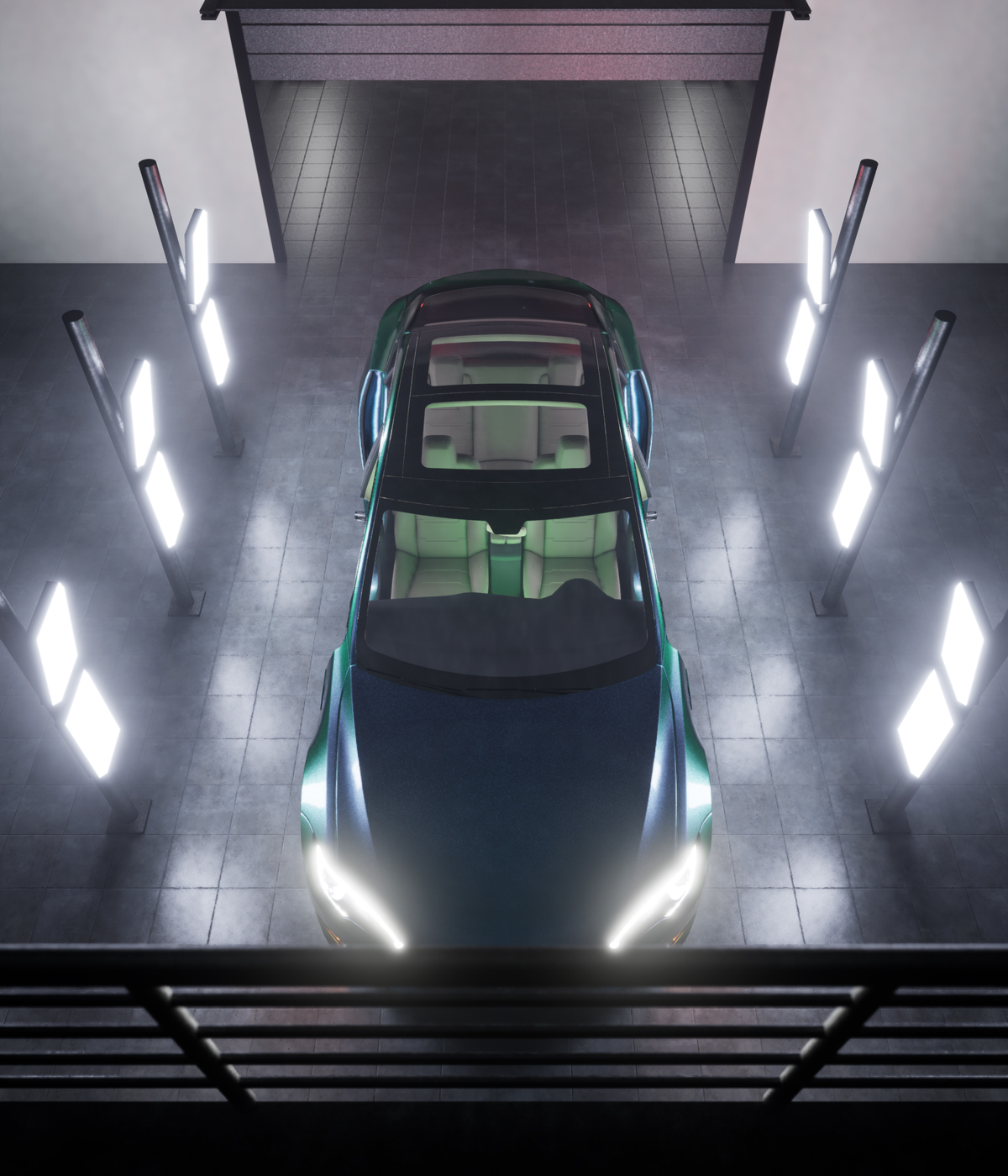
The show also touches on the role of professional care within an increasingly automated system, with the top-floor installation inviting visitors to cosplay as AI therapists. One film features equine therapy, as the car is taken for an emotional drive alongside a horse. ‘I was thinking about what happens in fancy treatment centres,’ says Lek. ‘But also, this super-intelligent self-driving car might identify with a creature who is useful to humans until it becomes glue or a handbag. One hundred years ago, horses were essential modes of transport, agriculture, or war, but they became phased out in mechanised societies where they are no longer the working machine.’
The work is eerily devoid of people. On first entering the space, visitors may think they are experiencing a post-human society. But throughout, there are hints at the lives of those who own or run these machines. It’s a poignant reflection of a world that has recently been through severe lockdowns. ‘Where is everybody?’ Lek asks. ‘Are they at home sleeping? Getting everything delivered? Or are they completely gone? This noir mood is sadly very relevant today.’
Lawrence Lek: NOX at Kranzler Eck, Berlin, until 14 January 2024
